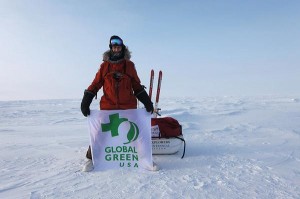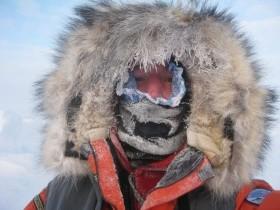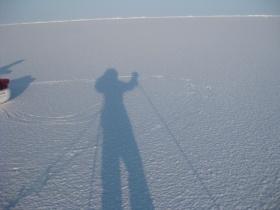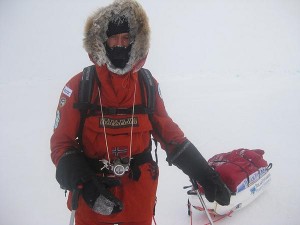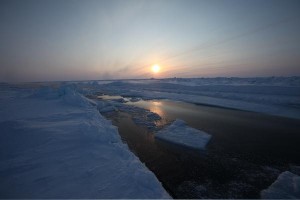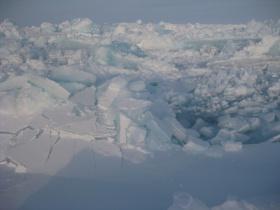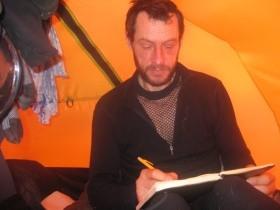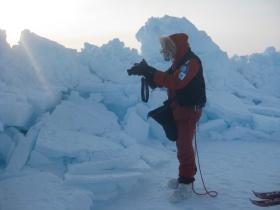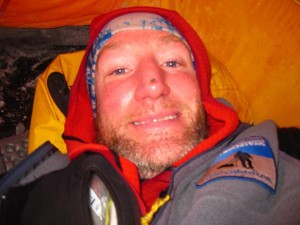Earth Day
April 22, 2009 4:06am88.7318N, 44.2366W
Another day of strong winds and poor visibility. After our tent was shaken and stirred all night long, it was our turn to get battered again by the 25-40 mph west-southwest lashes. Though the 100 foot visibility made today feel like gravy compared to yesterday’s pea soup in a blender. I guess everything is relative.
It’s hard not to feel defeated as we woke up behind our latitude position of the previous morning. Today, we spent half of the day repeating the hard earned mileage we lost overnight to the drift. Now we really feel like Sysiphus (he was sentenced by the gods to push a rock up a hill until it rolled back down, for the rest of eternity). Like nomads of the white desert, either chasing our shadow, chased by it, or by either side depending on the time of day–a whimsical companion for the many hours of this solitary journey–there is a lot of time to contemplate.
I reflect on human’s amazing ablity to survive in one of the harshest environments on Earth. And today especially, as the world celebrates Earth day, I think of how important it is to get out of the false sense of security that we have developed as city dwellers, lulled away by the convenience of technology from the responsibility and connection we have to the land that hosts us. Where does our garbage go? We don’t know. What is the true impact of our electrical power source and what is our consumption? What is our footprint since all efforts have been made to conveniently burry it inside a small envelope we call a bill?
Indigenous cultures have an innate sense of renewable and sustainable living because it is logical. Western cultures have mostly lost that. With each step into the white vastness of the Arctic sea, I am reminded of how small and vulnerable we really are, and confronted with the mirror of my own footprint. While the snow drifts covers my tracks, I know that I, too, would soon drown in the tears of Nature as its ice melts and floods our cities, forcing on us the reckoning of an order we lost. So let’s act now. (You can check www.globalgreen.org for some tips on what to do.) Happy Earth day!
We traveled for 12 hours and made 10 nautical miles, but probably covered 4 more lost to the drift. Our stopping position was N88°43.911 and W44°14.201. Temperatures today were around minus 15F without windchill. Good night.


